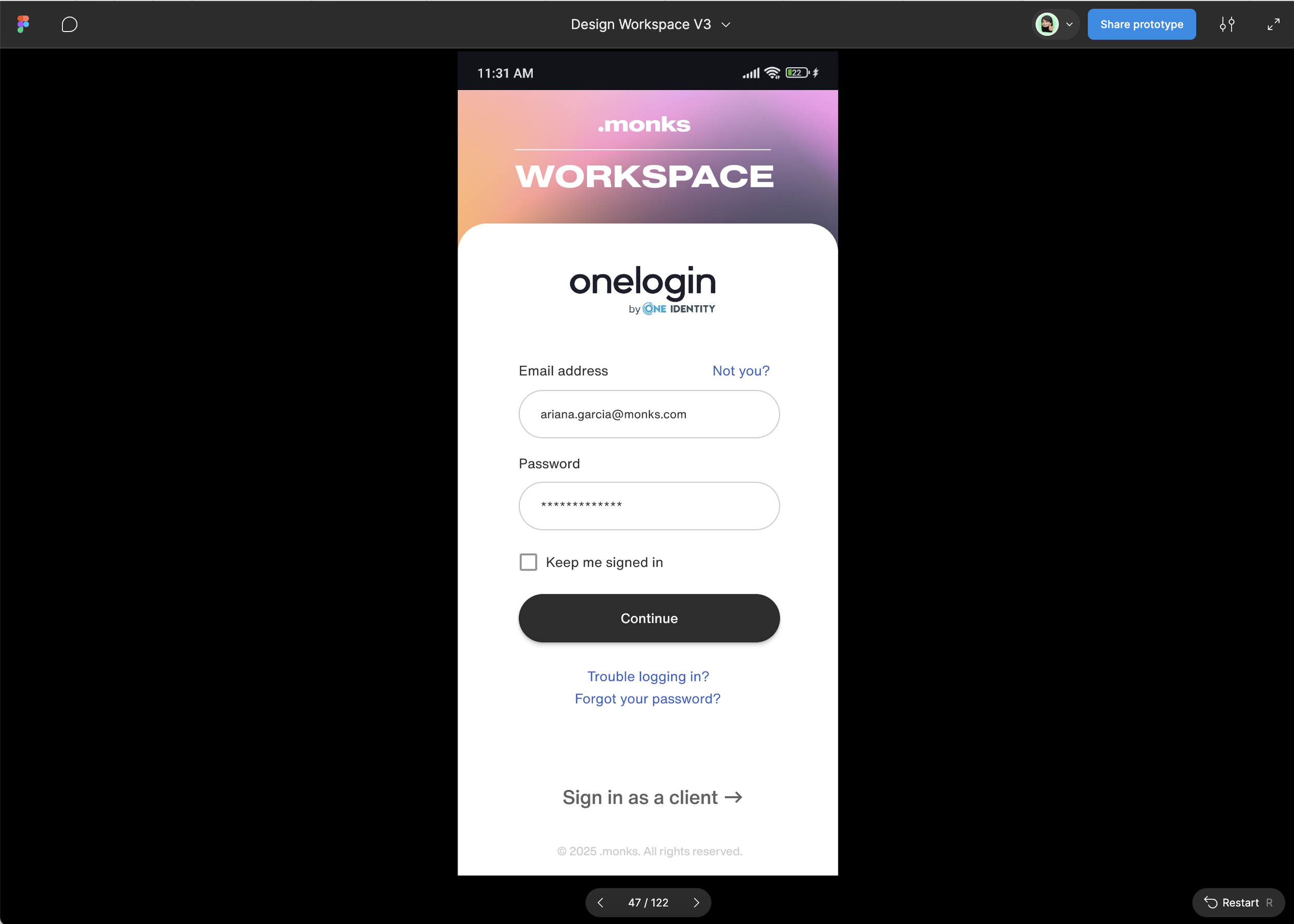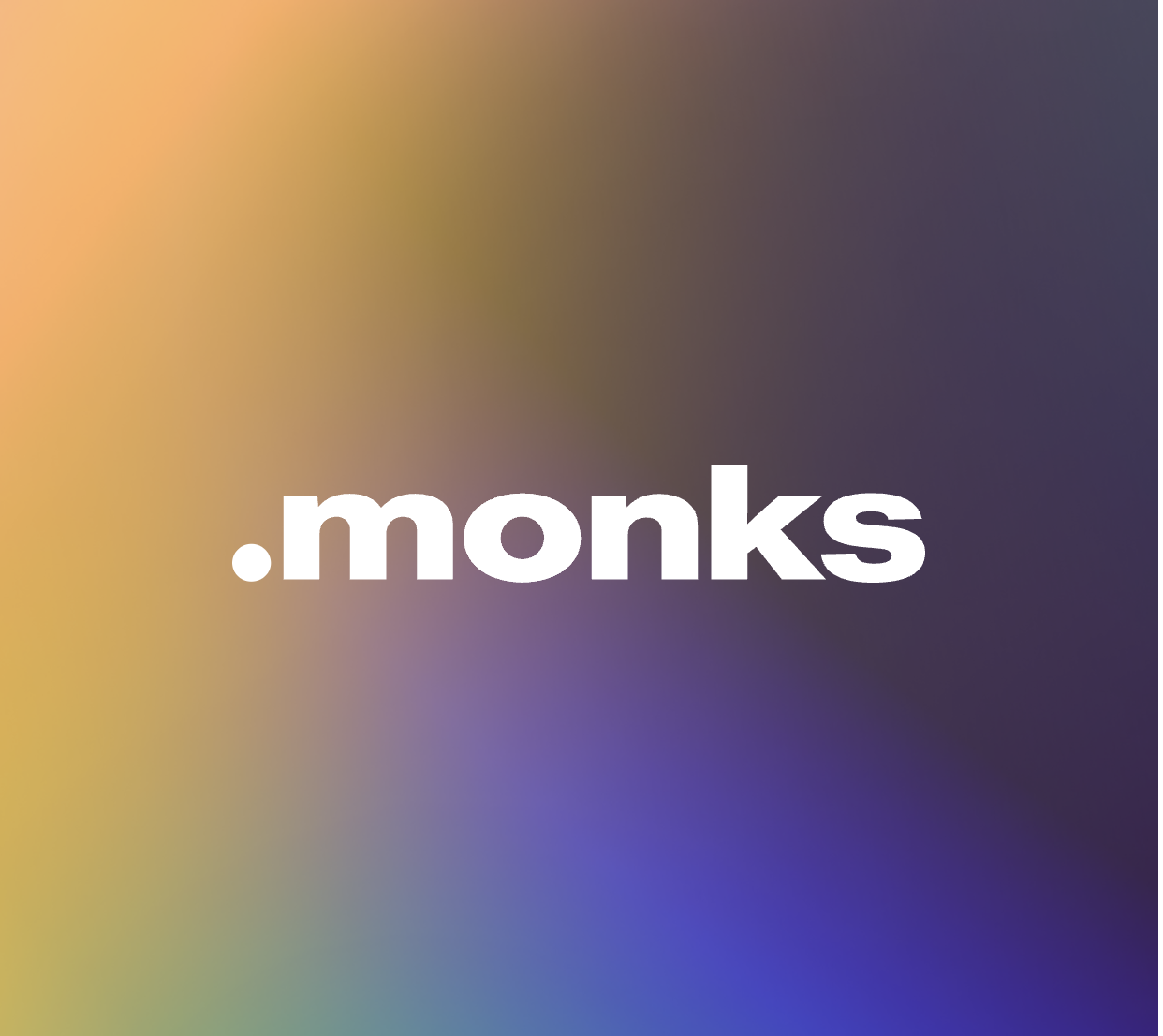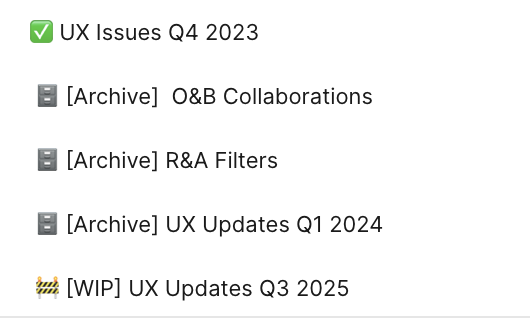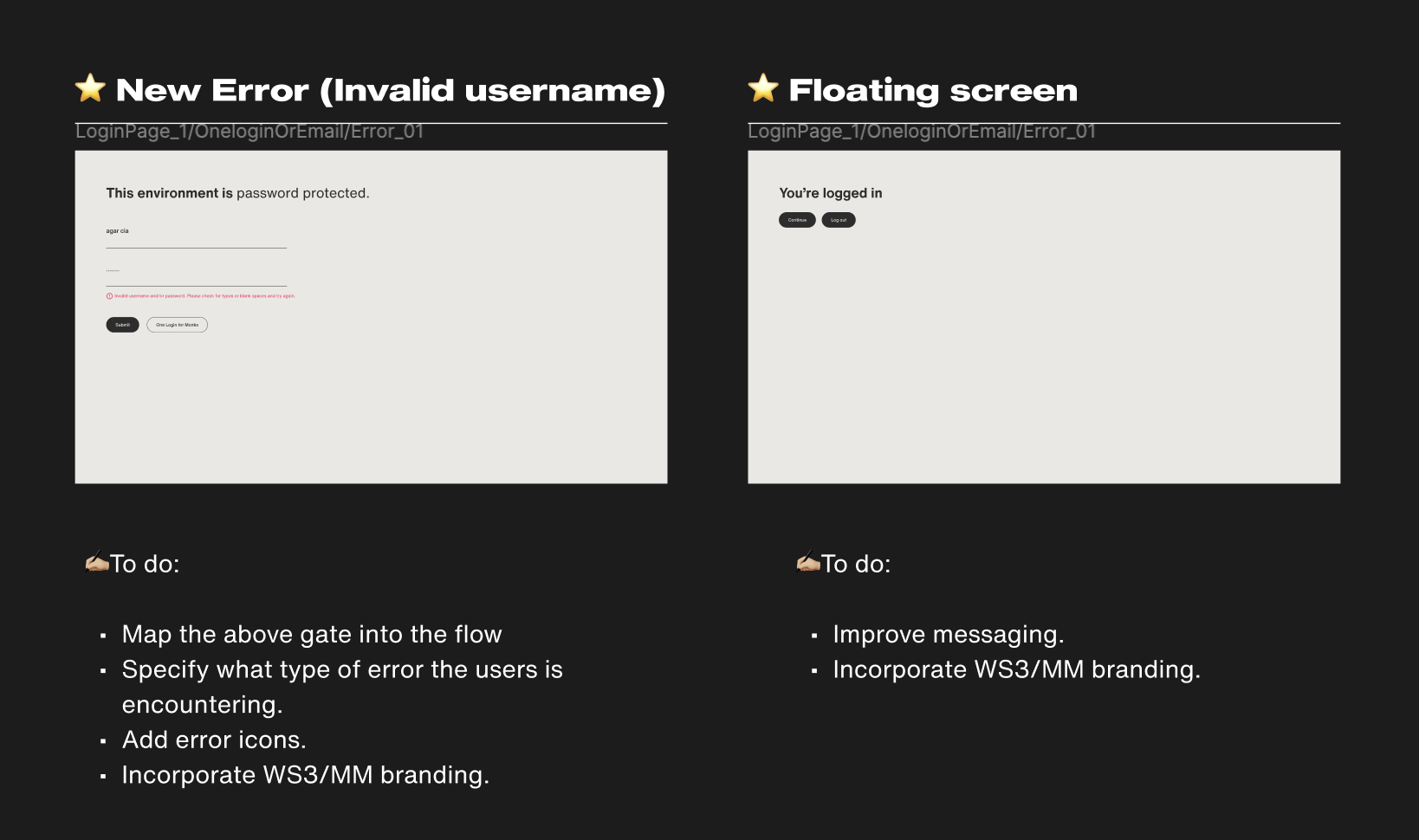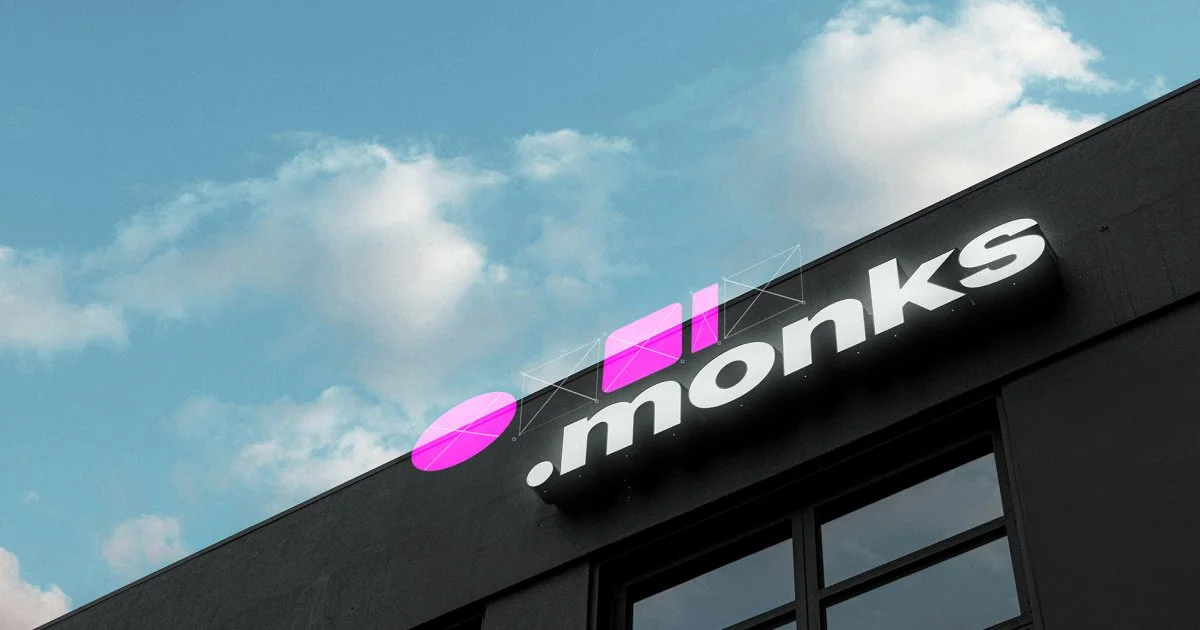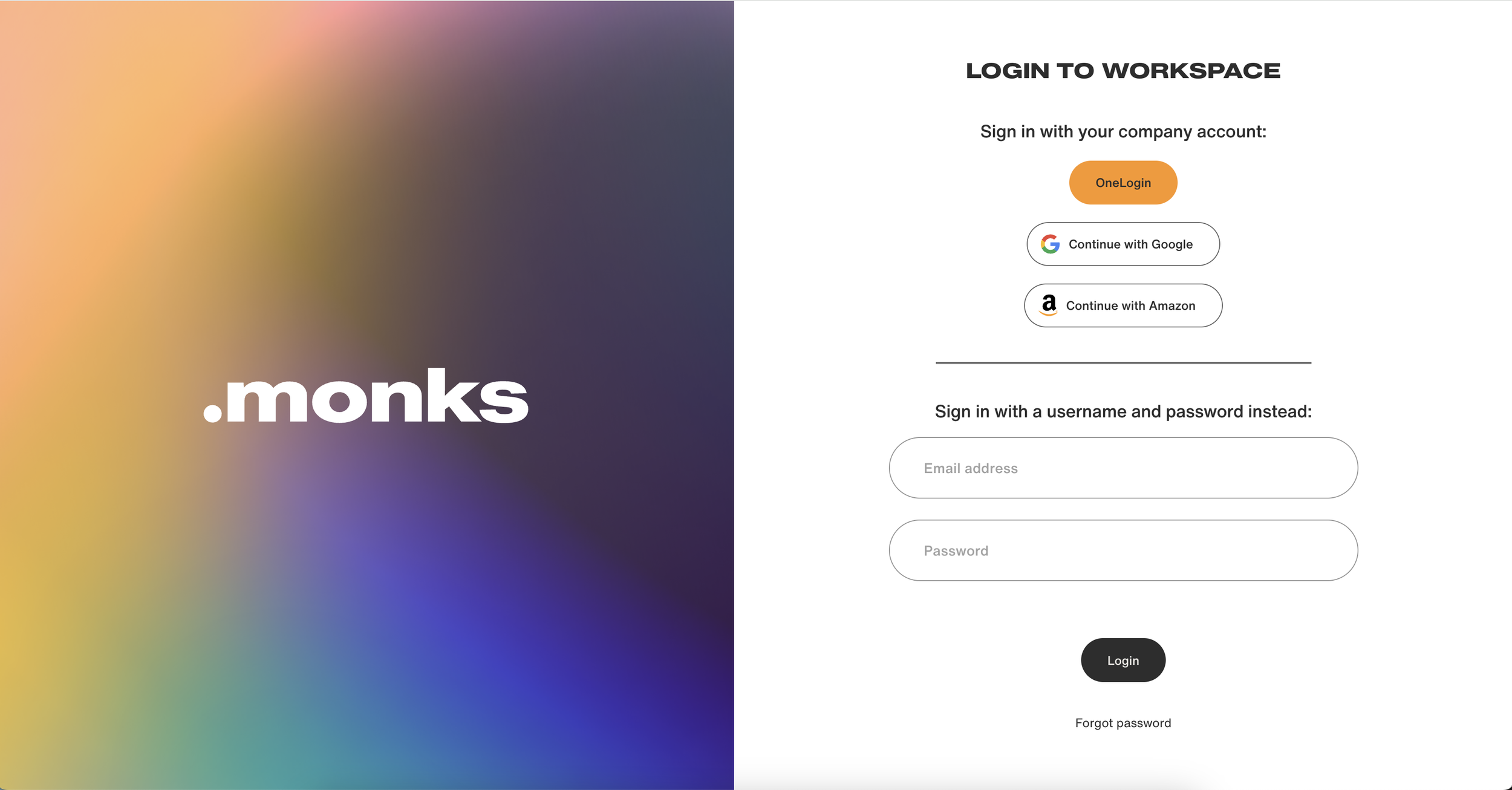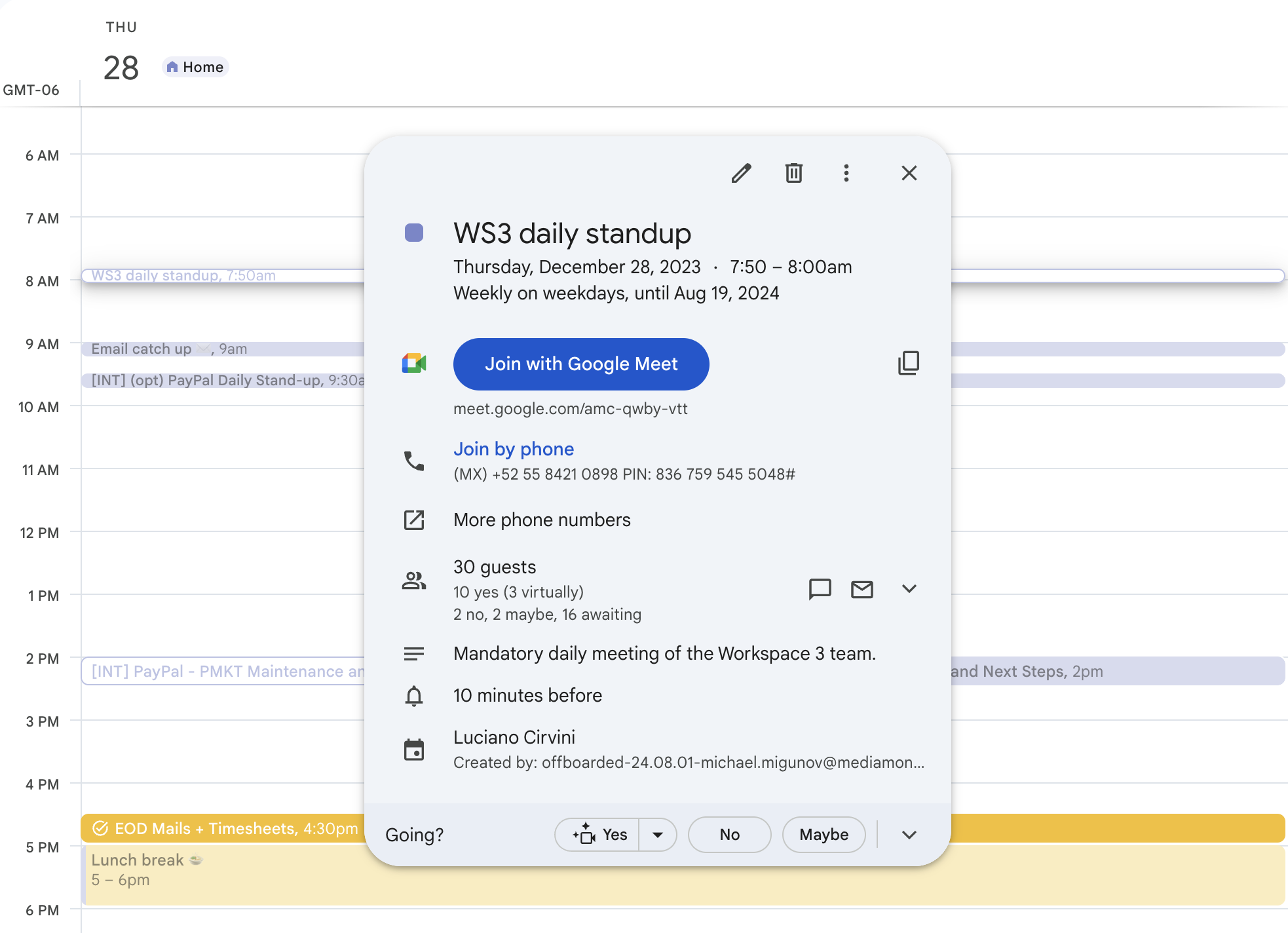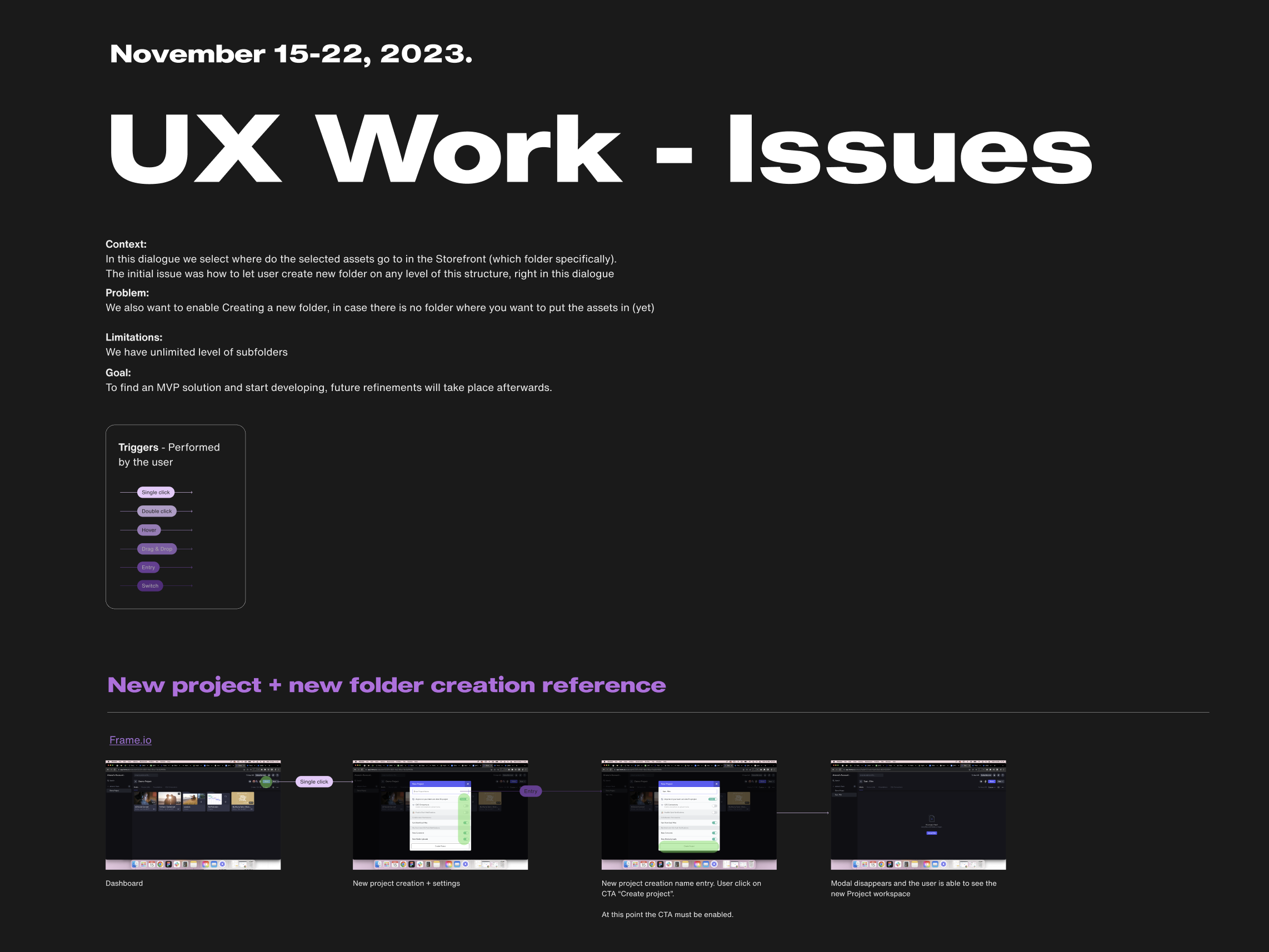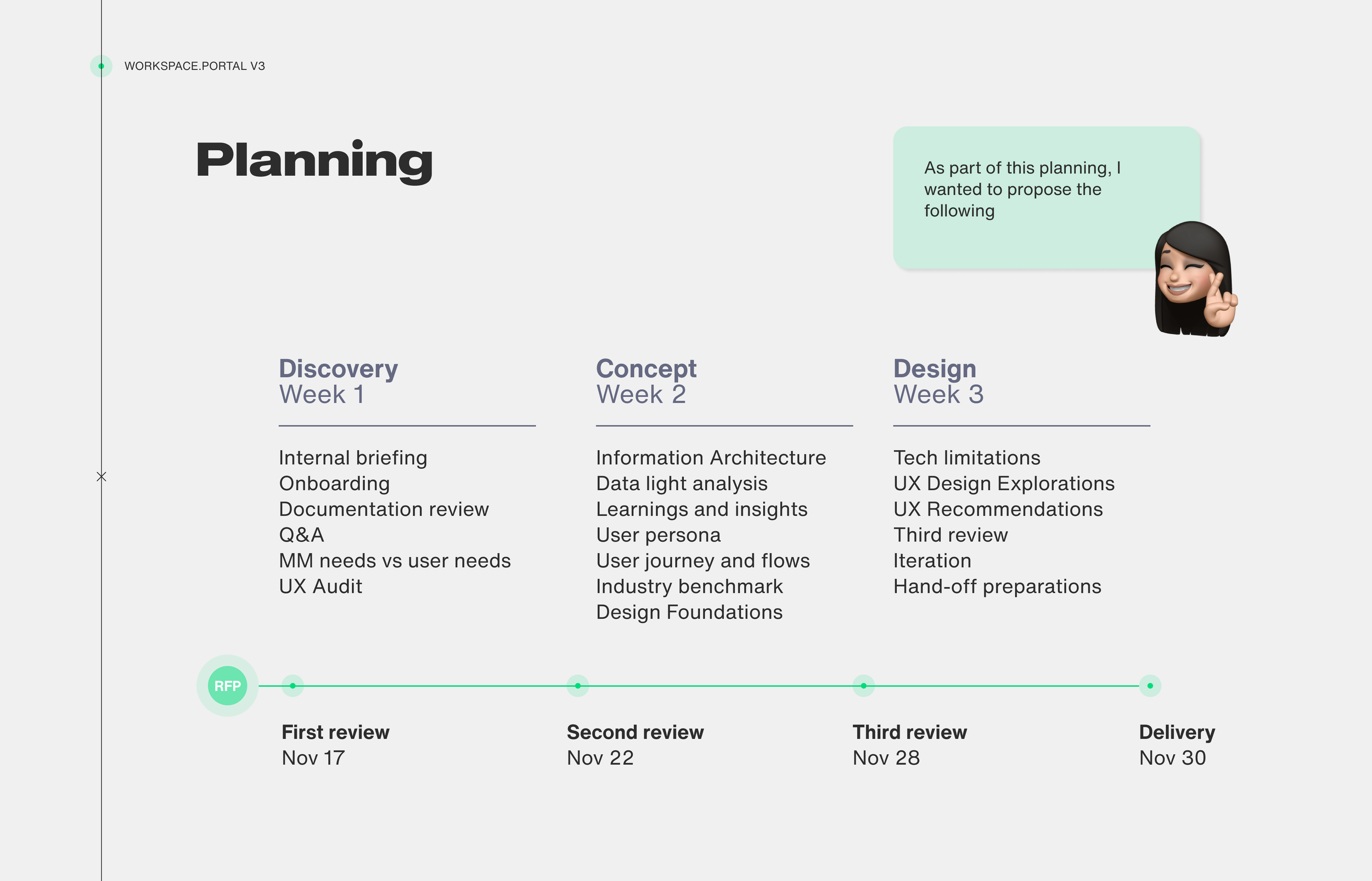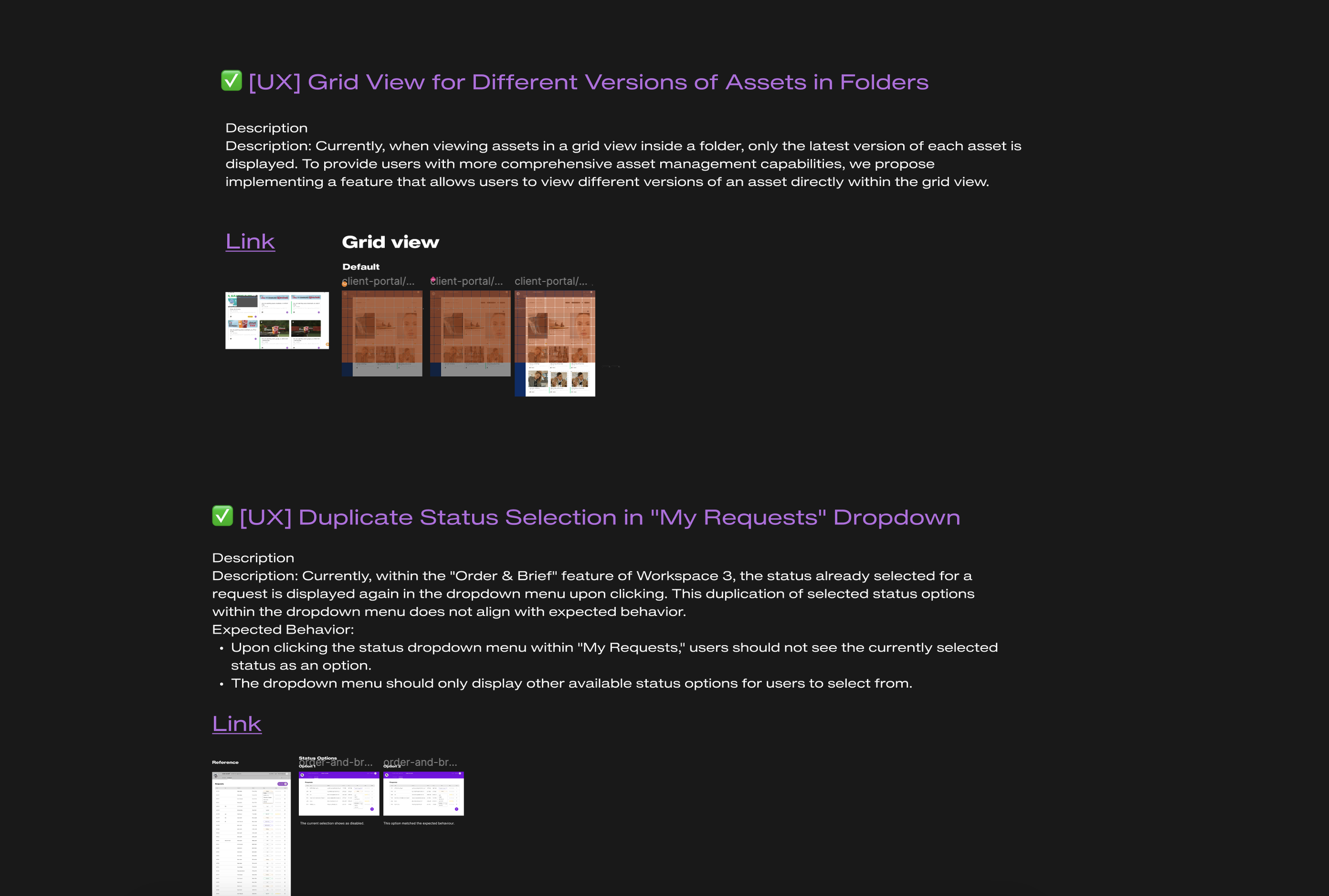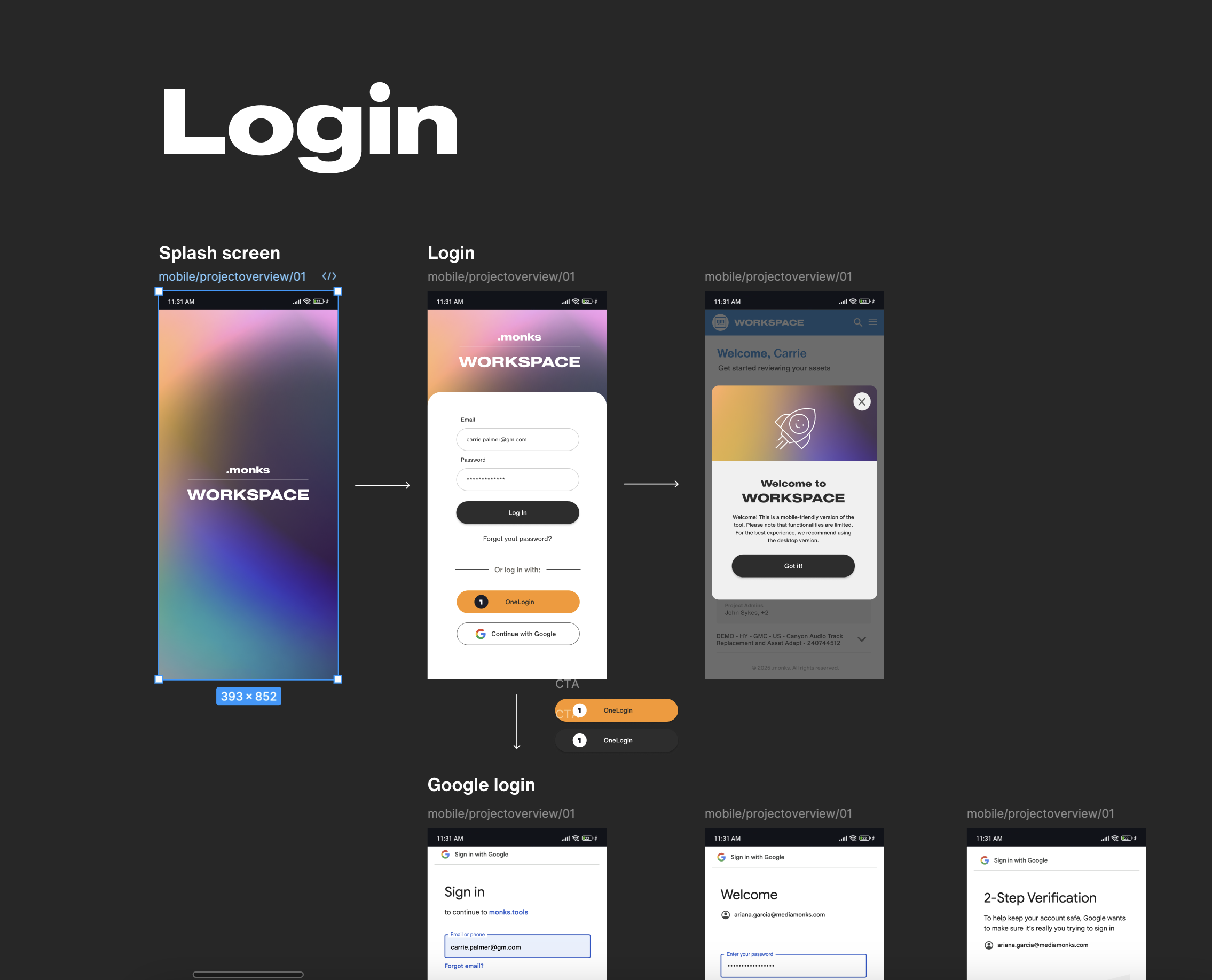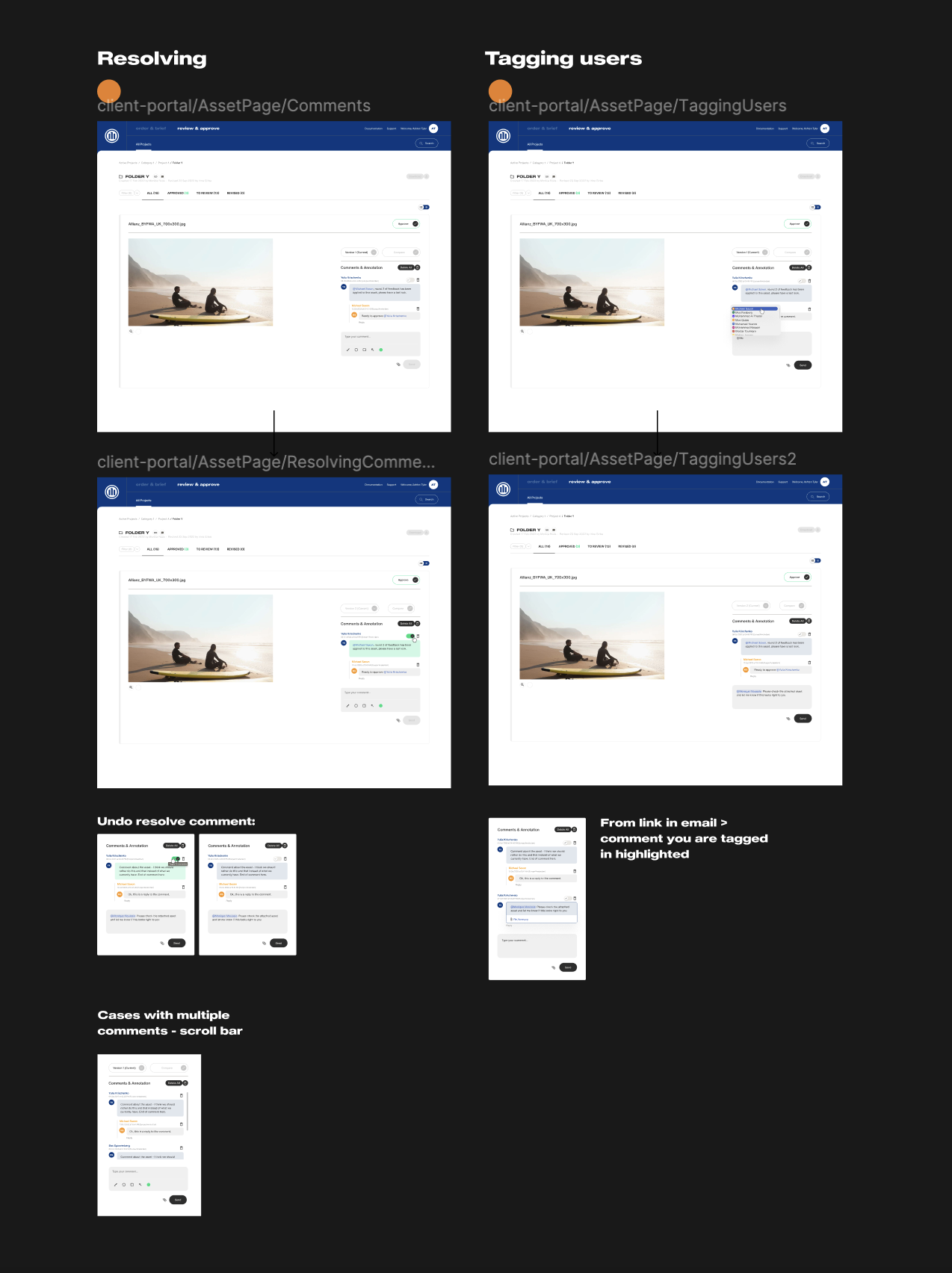Product Design
Workspace by .Monks
October 2023 - December 2024
About the client
Monks is a digital-first marketing, technology services and consulting company that connects content, data and digital media and technology services.
About Workspace 3
Workspace 3 is an asset collaboration platform created by .Monks that enables teams in design, marketing, content creation, and product development to collaborate on, manage, and share digital assets in a centralized, organized, and often real-time environment.
Deliverables
High fidelity wireframes
Figma hand-off with detailed rationale and actionable recommendations for each issue.
Role and responsibilities
UX Design and UI Design
Wireframing & Prototyping
User Flows & Journey Mapping
Visual Design Support
Usability Considerations
Design Reviews & Iteration
Objectives
To audit the entire tool from a UX standpoint.
To provide and prioritize UX recommendations to unify the user experience and reduce the backlog for deployment.
Kick off
Once onboarded, I began exploring the product and reviewing its supporting documentation to build a strong foundation for the future UX work. My main challenge was aligning with the constantly evolving development requests while quickly getting up to speed with a complex and well-established product workflow from a user experience perspective.
UX Audit
Based on usability principles, I conducted a UX audit to identify areas of opportunity within the product. To better identify areas of improvement, secondly I reviewed user inquiries and gathered insights from Producers. Unfortunately, conducting user interviews and usability testings were out of scope.
Key action items:
Optimize the product brand consistency
Improve messaging in across the product
Implemented clear error states and how to recover from them
Enhance site’s architecture and navigation
Re-defining the backlog
To translate UX insights into actionable backlog items, I presented the findings from the audit and worked with the product team to prioritize key issues and remove less relevant ones from the backlog. The criteria used to define the backlog were as follows:
Impact: How will the product benefit the user and .Monks?
Effort: It’s worth mentioning that the development branch was the backbone of the project, so we had to consider technical estimations for each issue first.
The entire project is (to this day) managed in JIRA with an Agile methodology, where the Product team provided context, considerations, and relevant documentation that helped me come to better and more informed solutions.
Wireframing
Once I aligned with the production team, I started designing new design patterns who build on the existing design system. A key success factor in this project was the strong collaboration with other teams, which enabled me to validate feasibility and explore various solutions that were more efficient in terms of the timeline.
To validate the technical feasibility, I communicated asynchronously with developers from the Netherlands, Ukraine and Argentina. To validate the designs, I connected bi-weekly with the Product and Design teams (Central European Standard Time).
It’s important to note that the design system was in its initial phase, making it an ideal opportunity to thoughtfully integrate new elements during this stage of the project.
User Experience inputs
Mapped clear user flows for developers.
Re-designed the main and side navigation to make it more digestible and free up viewport space.
Improved the consistency of the messaging across the product
Designed simpler intake forms to reduce the cognitive load
User Interface inputs
Applied new design patterns based on similar products
Reduced visual clutter to optimize the visibility and clarity of screen elements.
Designed and prototyped future-proof ideas
Help Center
Workspace 3 Academy
Mobile responsive design (web app)
Sucess goals
-
-
Clear UX means less confusion and fewer help requests.
-
Faster delivery of high-quality designs from concept to launch.
My learnings
Taking Time to Understand the Product
This product has gone through two iterations and comes with significant legacy and technical considerations. Needless to say, the learning curve for developing feasible solutions was challenging. However, at every step of the way, the management and UI team were supportive and guided me through the process.
Seeking Inspiration from Highly Complex Products
Referencing highly technical and complex products such as Confluence, Frame.io, and ZohoDesk helped me establish more logical patterns for the product.
Time Management Learnings
Since this project only required one hour of my time per day, it was easy for me to get caught up in my other priority tasks and work overtime. Additionally, the 7-hour time difference with the rest of the team often made me feel like I was falling behind. After discussing this with the team, we agreed to set up weekly checkpoints to improve collaboration and efficiency.
The team
-
Monique Moussie
-
Bas Spoorenberg
Luciano Cirvini
-
Anton Pleskach
Franco Garzon
Lucas Mattiauda Rios
Oleksandr Lymorenko
Confidentiality Disclaimer
This work is strictly confidential. Certain exhibits, work samples, and service samples are proprietary to the organization whose name has been concealed for confidentiality reasons. This portfolio is for informational purposes only. Unauthorized reproduction of this content is a violation of the author's rights.
